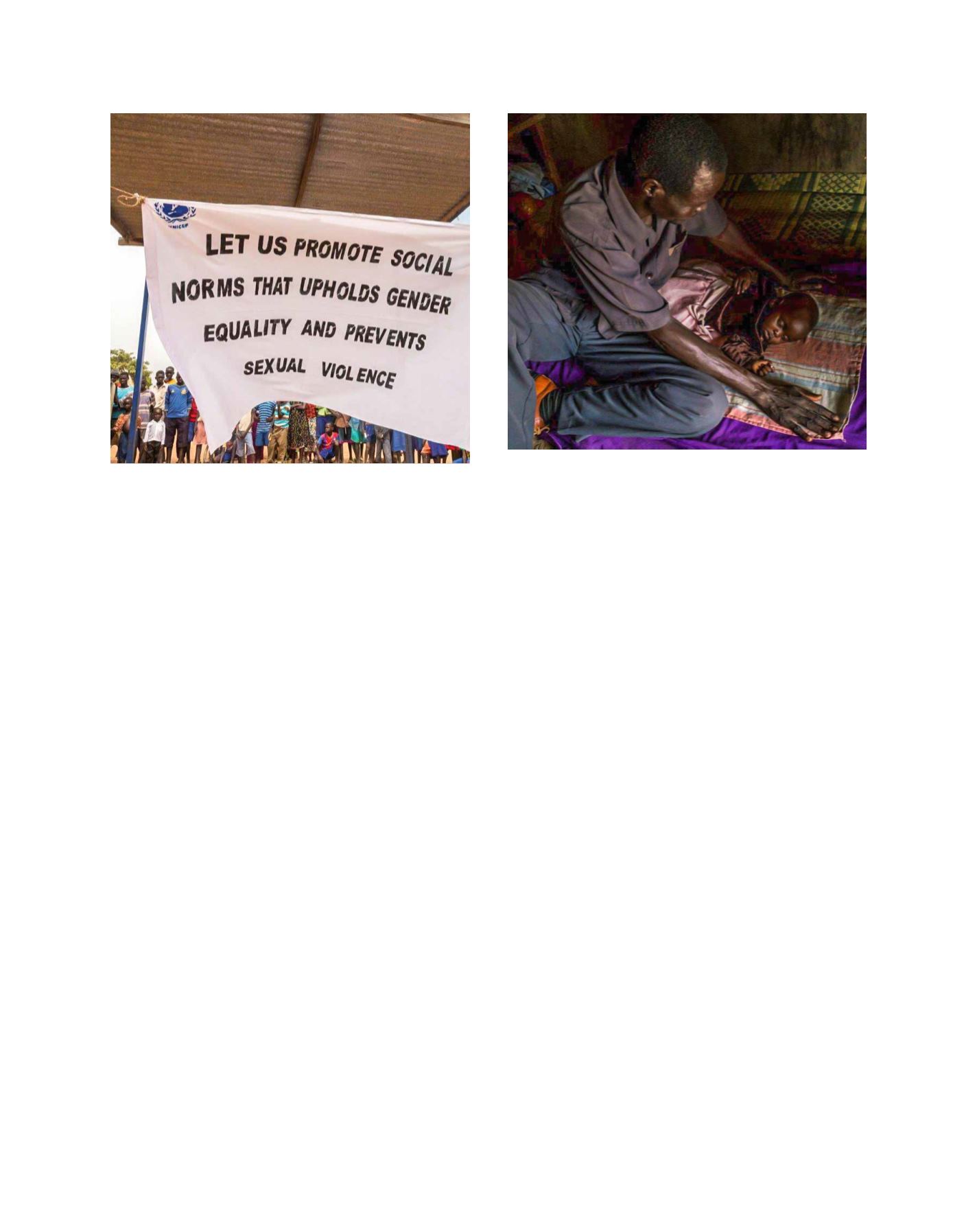

Positive change
While it is too early to determine the sustainable impact
of the CC programme, early indicators are positive. Thus
far, the pilot programmes in both South Sudan and Somalia
have trained over 600 service providers, worked with over
1,000 community discussion participants, engaged 50,000
people in collective community actions and community
events, and reached over 17,000 through radio-based
awareness-raising efforts.
Emerging evidence also shows that community discussion
dialogues promote community action and contribute to safer,
more peaceful communities. Trained Community Discussion
Leaders demonstrate increased awareness and understanding
of the negative impacts GBV can have on community cohe-
sion. Service providers across many sectors also demonstrate
greater understanding of the specific needs of survivors, as
well as the positive impact they can make, including as role
models in their communities.
Preliminary findings point to significant differences in
outcomes between control and intervention groups, with
the latter reporting a reduction in acceptability of the social
norm of ‘protecting family honour’, as well as the norm of
blaming a woman/girl for the sexual violence she has expe-
rienced. Intervention communities also report a reduction in
intimate partner violence and the acceptability of husbands
using violence against their wives.
In the CC programme, communities are the engine of
transforming lives and preventing violence against girls and
women. They are also the voice to advocate for systems
change and accountability to better prevent and respond
to violence.
We hope this example inspires and translates across the
globe as we collectively aim to achieve the Sustainable
Development Goal 5 target of eliminating all forms of violence
against all women and girls in the public and private spheres.
• Conduct trainings for teachers and non-teaching staff to
understand and sign the code of conduct.
• Implement a zero-tolerance policy on sexual exploitation
and abuse.
• Incorporate life skills into school curricula to promote
self-esteem and confidence among students, especially
girls, and to challenge negative social norms.
While monitoring is ongoing, at the time of writing, three
schools were visited and all of them had implemented at least
one of the recommendations.
Improving the justice system
Prior to the CC programme trainings, some members of
customary courts were unaware that sexual violence is a crim-
inal offence under the Penal Code and did not know that only
formal justice systems can handle such cases. Police officers
were under the incorrect impression that certain paperwork
and reporting was a precondition to survivors being able to
access medical care.
The training helped participants understand these basic
laws and policies as well as their roles in preventing and
responding to sexual violence. In one community, as in the
one mentioned above, a clear legal response protocol was
developed by participants, highlighting do’s and don’ts for
both customary and formal legal structures to support survi-
vors seeking legal redress.
In another location, a mentoring and supervision plan was
developed after the training, and follow-up meetings are ongoing
among participants and the county police inspector to discuss
the role of law enforcement and the courts in providing justice
to women and girls who have experienced sexual violence. The
CC programme training module for law enforcement actors was
also shared with the South Sudan National Police Services as
potential input to the national police training curriculum.
Mayen Awak, Senior Community Engagement Officer for the Organization
for Children’s Harmony in Gogrial, worked closely with community members
to bring the CC programme to completion
Image: UNICEF/Adriane Ohanesian 2015
Children gather for the launch of the CC programme in Gogrial West, South
Sudan on 16 November 2015
Image: UNICEF/Adriane Ohanesian 2015
A B
etter
W
orld
[
] 42
















